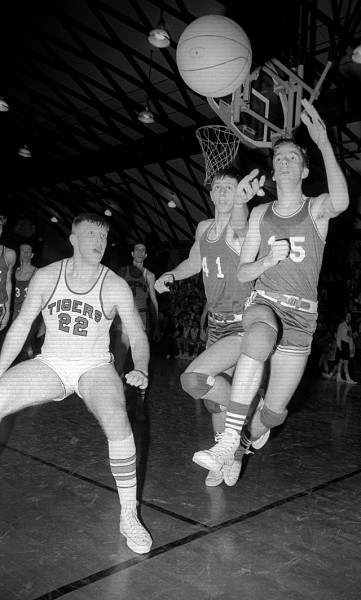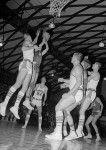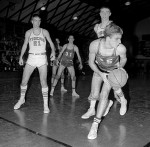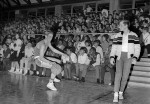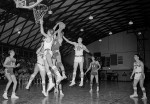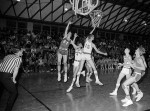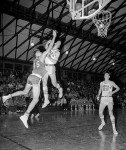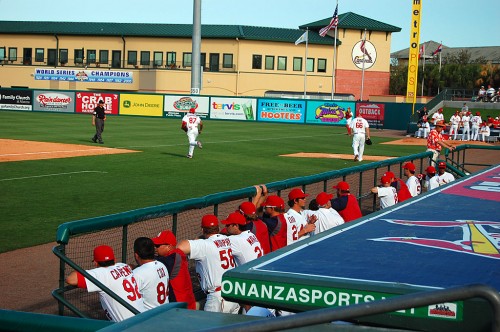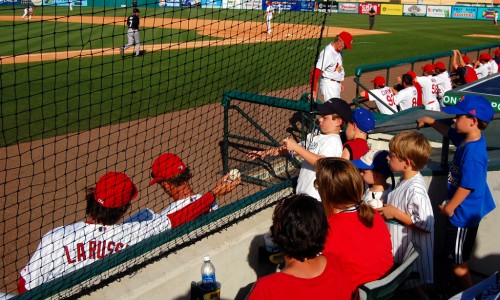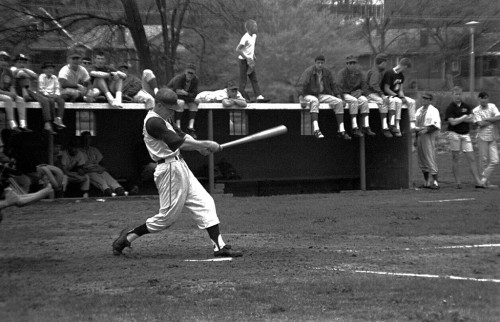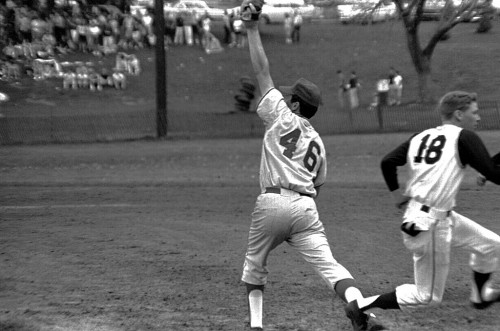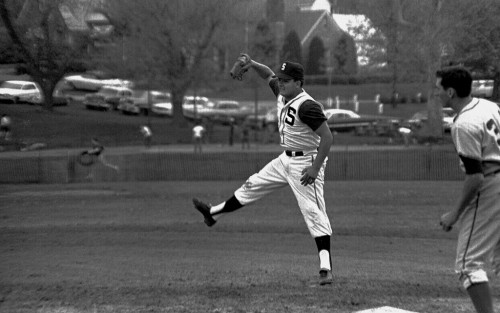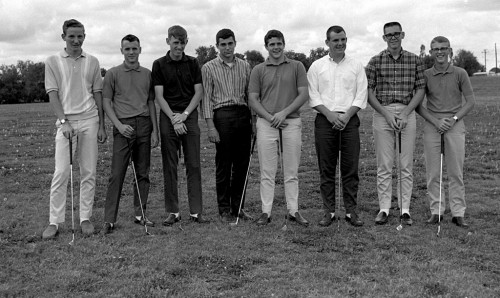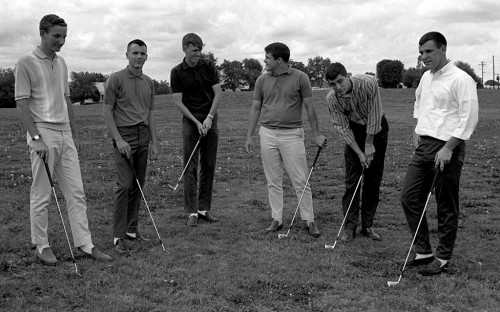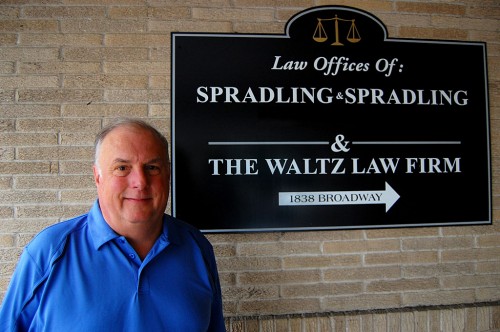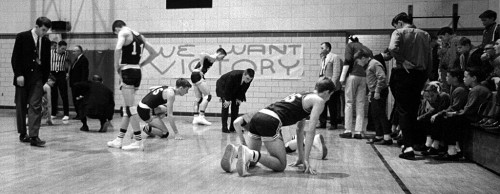 About the only thing that was different about this Notre Dame vs Central High School basketball game was that it was the first game that I can recall was delayed because of a lost contact lens.
About the only thing that was different about this Notre Dame vs Central High School basketball game was that it was the first game that I can recall was delayed because of a lost contact lens.
The Feb. 1, 1967 Missourian photo caption said,“Basketball wasn’t the only action on the floor at the Central High gymnasium Tuesday night. Tim Bucek, Notre Dame player, lost one of his contact lenses. Action stopped while players, coaches and fans from both teams got down on hands and knees to search for the tiny eyepiece. Finally, someone looked at Tim and saw the bit of glass clinging to his jersey. Play resumed while he returned to the dressing room to insert the lens before going back in the game.”
Pep Band Tigered up
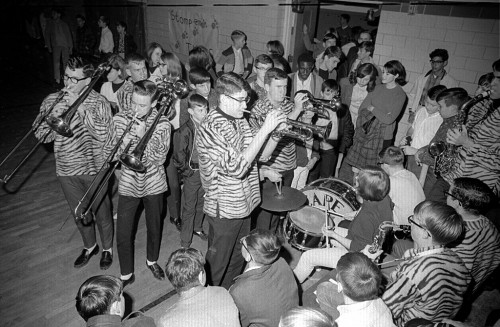 The Central Pep Band dressed a little spiffier in 1967 than it did in this photo from 1963.
The Central Pep Band dressed a little spiffier in 1967 than it did in this photo from 1963.
Routine basketball action
I really didn’t like shooting basketball, even though it was easier than shooting football. In later years, when I had faster lenses and faster film, I’d shoot available light (when I was in a gym that had light available) and concentrate on mid-court action where the pictures were more interesting than armpit shots.
One of the problems with shooting with a single direct flash was that the photos had no modeling in the players’ faces because the light was coming from straight on. You also tended to get a “soot and whitewash” effect, where objects closer to the camera were overexposed and objects further back went to black.
All white faces on the court
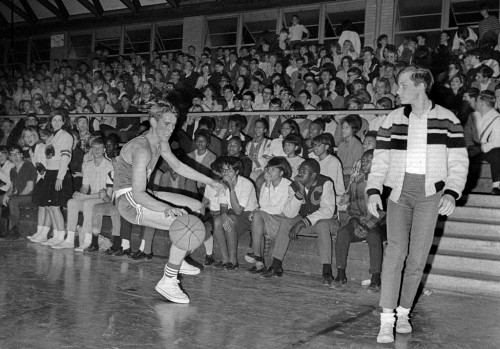 Cape schools had long been intergrated by 1967 and the teams had a mixture of races on them, so I’m surprised to see all white faces on the court in these shots.
Cape schools had long been intergrated by 1967 and the teams had a mixture of races on them, so I’m surprised to see all white faces on the court in these shots.
I just pulled out my 1965 Girardot. I guess I shouldn’t be surprised to see all white faces. The only black player pictured on the 1965 varsity and junior varsity teams was standout Sylvester Johnson, who was also on the 1964 football varsity along with Albert Estes and Charles Duncan. I remember Clyde Benson broke the tennis color barrier.
Photo gallery of basketball game
Who won the game? Well, Bob Evans wasn’t exactly kind in his story. “As of Tuesday night, it is a proven fact that the favorite food of a Bulldog is Tiger. This was shown when a talented Notre Dame ball club defeated cross-town rival Central, 86-63 in area basketball. This was the third defeat of the season for the Tigers in games with the Bulldogs and the fifth in a row over a two-year period.”
Click on any photo to make it larger, then click on the left or right side to move through the gallery. For the record, the players weren’t imitating zebras in some of these photos. For some reason or another, my Nikon film scanner picked up some noise that I didn’t bother to spot out.

